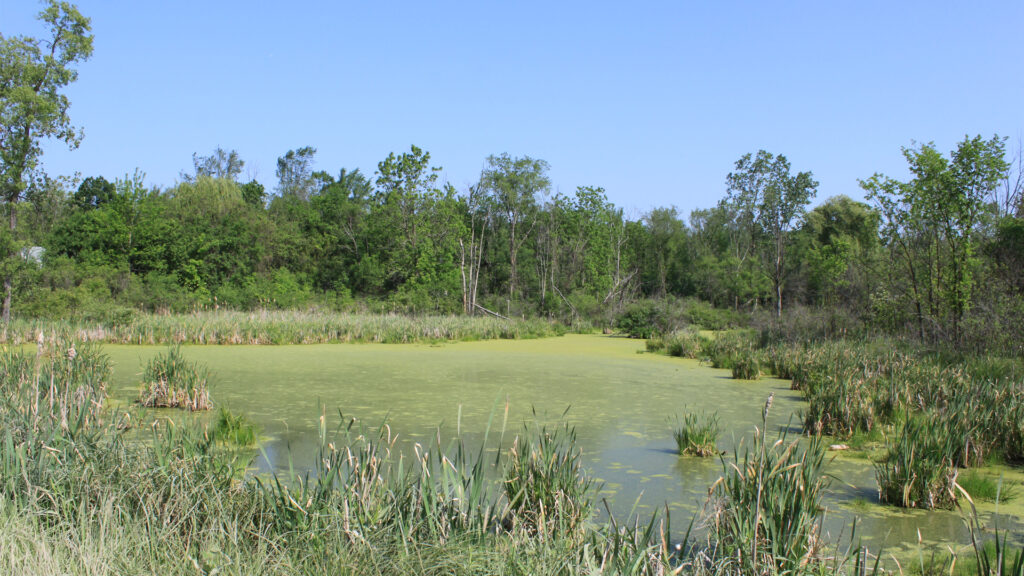By Alisa Coe, Earthjustice
Here we go again — another Florida summer season for swimming, boating and fishing is getting wrecked by gross and harmful algae outbreaks.

We know the cause — these outbreaks are fueled by sewage, manure and fertilizer that runs into our waterways every time it rains. Florida’s environmental officials identified the problem decades ago, but still, their latest approach is to spray the algae mats with chemicals and sink them, which does nothing to get rid of the phosphorus and nitrogen pollution that’s sparking algae outbreaks.
The approach that we know works — preventing pollution in the first place — still isn’t happening. In fact, it just got worse.
In an absurd political move, the Florida Legislature passed a state budget measure in May that actually bans local communities from curbing pollution into public waters. Then the DeSantis administration declined to use veto power and, instead, let this bad idea become law.
Starting July 1, no city or county can pass a new ban on spreading fertilizers — a key way we know to curb algae outbreaks during the rainy season.
Over 100 Florida municipalities restrict fertilizer use during the rainy season to try to keep public waters from getting blanketed with harmful algae outbreaks. The new law doesn’t affect these existing ordinances, just new ones. But existing ordinances can’t be expanded or strengthened.
Because of this wrongheaded policy, we’re going to have to endure another summer of slime, again without our government offering real solutions to target the so-called “nutrients” phosphorus and nitrogen from sewage, manure and fertilizer that super-charge algae outbreaks.
At Earthjustice, we’ve tried to use the courts to prevent harmful algae outbreaks. We filed a federal lawsuit in 2008 on behalf of five Florida environmental groups — the Florida Wildlife Federation, the Conservancy of Southwest Florida, the Environmental Confederation of Southwest Florida, St. John’s Riverkeeper and the Sierra Club. The suit challenged the decade-long delay by the state and federal governments in setting limits for phosphorus and nitrogen pollution. In 2009, the U.S. Environmental Protection Agency agreed to set new limits on phosphorus and nitrogen in public waters, which was a big court win. Unfortunately, the EPA ended up caving to the Florida Department of Environmental Protection, which crafted rules friendly to the fertilizer, agricultural and sewage disposal industries.

We can all look around at our waters, at the dying seagrasses, the dead manatees, the no-swimming signs from the Health Department, the dead fish littering beaches, and see these too-weak standards are not working. In the Indian River Lagoon, where algae outbreaks have wiped out seagrasses and killed hundreds of manatees, Earthjustice is representing the Center for Biological Diversity, Save the Manatee Club and Defenders of Wildlife in an Endangered Species Act case to require the EPA to consult with the U.S. Fish and Wildlife Service and National Marine Fisheries Service to reassess EPA’s approval of Florida’s water quality standards for the Indian River Lagoon. The dead manatees are stark evidence that the water quality measures set for the Indian River aren’t protective enough.
You’ll hear a lot of crowing this year about the money state government is spending on the environment. Look behind these claims, and ask yourself: Are we spending the money to fix the problem or just paper over it? Who benefits? And what are we leaving as a legacy for the future kids who want to hang a fishing pole in a bay, surf the waves, watch a manatee float by, or jump off a rope swing into cool Florida waters?
Alisa Coe is a senior attorney in the Florida office of Earthjustice in Tallahassee. This opinion piece was originally published by the Sun Sentinel, which is a media partner of The Invading Sea.
If you are interested in submitting an opinion piece to The Invading Sea, email Editor Nathan Crabbe at ncrabbe@fau.edu. Sign up for The Invading Sea newsletter by visiting here.



